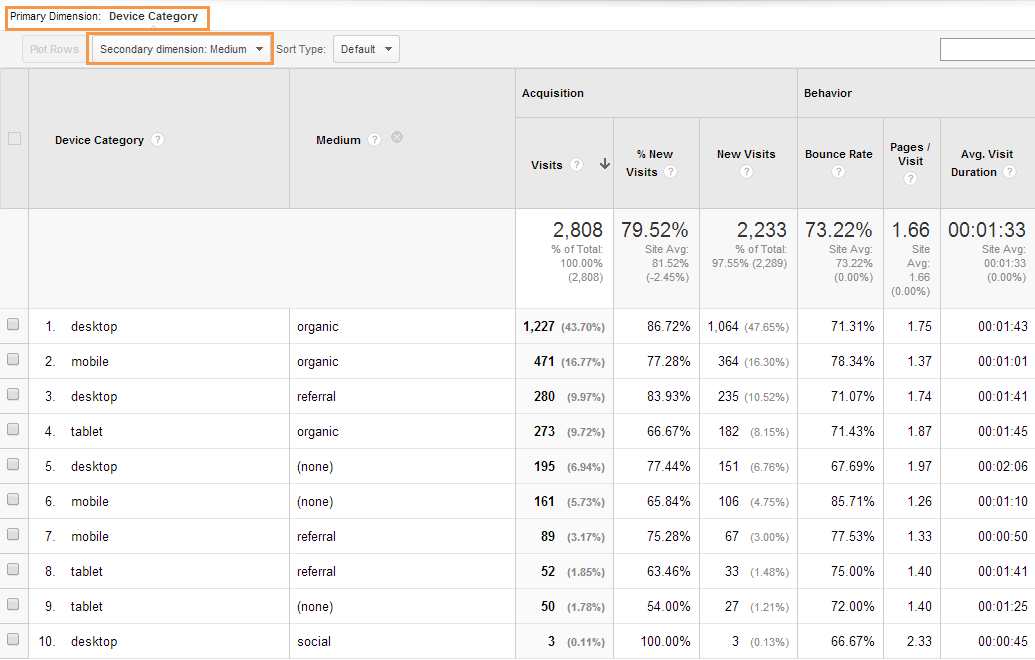Enhance Your Data Evaluation with Secondary Dimension in Google Analytics
Enhance Your Information Analysis Making Use Of Additional Measurement in Google Analytics
Discovering the abilities of second measurements in Google Analytics opens up a realm of opportunities for refining data analysis. By layering additional measurements onto key data collections, a more intricate narrative emerges, shedding light on individual interactions and efficiency indications.
Comprehending Second Measurements
In the realm of information analysis, an essential element to grasp is the idea of additional measurements and their importance in drawing out deeper understandings from Google Analytics records. Additional dimensions in Google Analytics refer to added specifications that can be added to the key dimension, enabling for a much more comprehensive evaluation of data. By including second dimensions, experts can sector and filter information to uncover patterns, trends, and correlations that might not appear when considering the information all at once. These second dimensions can provide context and a more extensive understanding of individual habits, web traffic resources, and other vital metrics tracked by Google Analytics.

Advantages of Utilizing Second Dimensions
When examining data in Google Analytics, the application of second dimensions offers indispensable insights into user behavior and performance metrics. By including a second dimension to your main data, you can dive much deeper into the characteristics of your website site visitors and their communications.
Furthermore, additional measurements improve the context of your key data, supplying a much more thorough sight of individual involvement and performance metrics. Overall, the use of secondary measurements in Google Analytics can substantially boost the depth and quality of your information evaluation, leading to more informed decision-making and enhanced outcomes.
Just How to Include Secondary Dimensions
By incorporating secondary dimensions in Google Analytics, individuals can obtain much deeper insights into their information evaluation procedure, enabling for even more detailed evaluation of user habits and efficiency metrics. Including second measurements is a straightforward procedure that can significantly enhance the deepness of analysis. When in the record, situate the "Second measurement" tab above the information table.
Studying Information With Second Dimensions
Utilizing second dimensions in information analysis offers an extra thorough understanding of individual habits and performance metrics. By including a second dimension to your primary data set in Google Analytics, you can dig deeper into the characteristics of your website site visitors and their interactions. Integrating the key dimension of 'source/medium' with the second measurement of 'landing page' can disclose which original site certain pages are bring in web traffic from various sources, aiding you enhance these web pages for better engagement.

In essence, assessing information with secondary dimensions encourages you to obtain valuable understandings into customer actions, recognize trends, and make notified decisions to improve the efficiency of your digital buildings.
Ideal Practices for Second Measurements
In data evaluation, integrating secondary dimensions successfully can significantly boost the deepness of understandings derived from metrics and customer behavior patterns. When utilizing secondary dimensions in Google Analytics or any kind of other analytical tool, it is essential to comply with ideal techniques to guarantee the precision and importance of the data analysis.
One trick finest practice is to very carefully choose additional measurements that match the key measurement being examined. Selecting additional measurements that give additional context or further segmentation can supply an extra comprehensive understanding of the information. It is likewise crucial to avoid overcomplicating the evaluation by including a lot of secondary dimensions, which might lead to complication or dilution of understandings.
Additionally, it is a good idea to try out various mixes of primary and secondary dimensions to reveal new relationships and trends. Frequently assessing and improving the choice check my source of secondary dimensions based on the details objectives of the analysis can cause more workable understandings. By adhering to these finest techniques, information experts can utilize secondary measurements successfully to boost the total data evaluation procedure and decision-making capabilities.

Final Thought
Finally, incorporating additional measurements in Google Analytics is essential for a detailed information evaluation method. By leveraging second measurements alongside key ones, experts and online marketers can discover valuable insights and connections that can educate decision-making and maximize digital marketing strategies. Understanding exactly how to properly utilize second measurements and following finest techniques will certainly allow experts to remove meaningful data and enhance their general efficiency More Bonuses metrics.
Secondary dimensions in Google Analytics refer to added criteria that can be included to the main measurement, enabling for a much more thorough analysis of information. By incorporating secondary measurements, experts can sector and filter data to uncover patterns, fads, and relationships that might not be obvious when looking at the information as a whole. Integrating the key measurement of 'source/medium' with the additional dimension of 'landing page' can expose which specific web pages are drawing in web traffic from different resources, helping you enhance these pages for better interaction.
One trick best practice is to carefully pick second dimensions that match the primary dimension being analyzed. By complying with these ideal techniques, information analysts can take advantage of second measurements properly to improve the overall data analysis process and decision-making abilities.